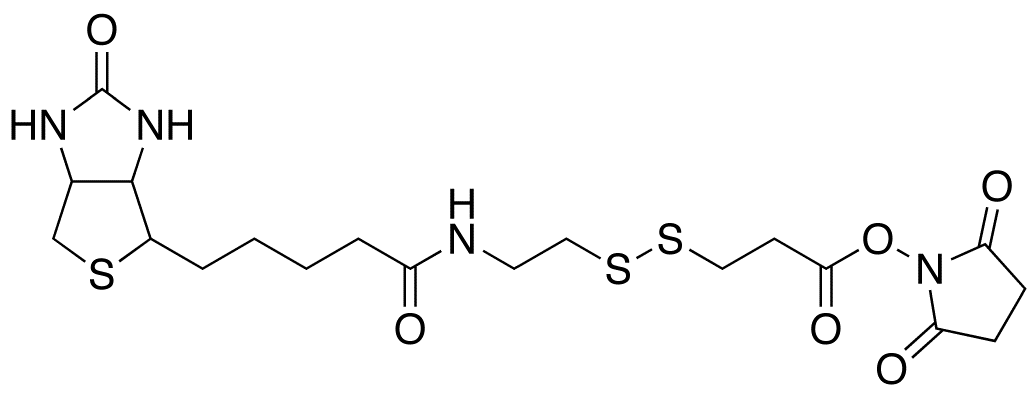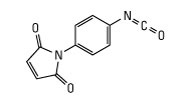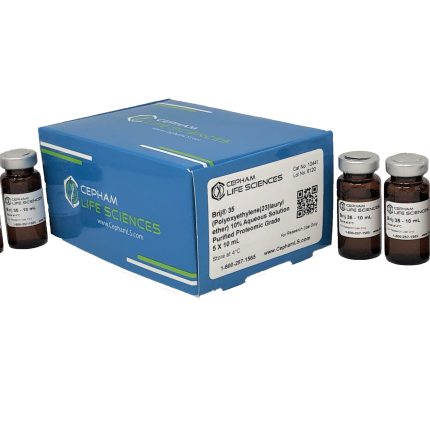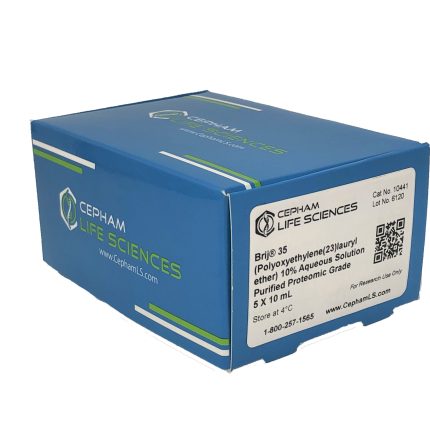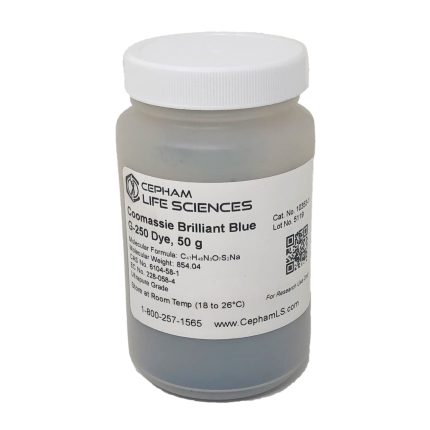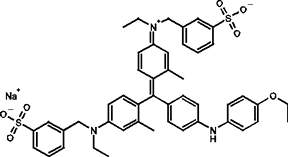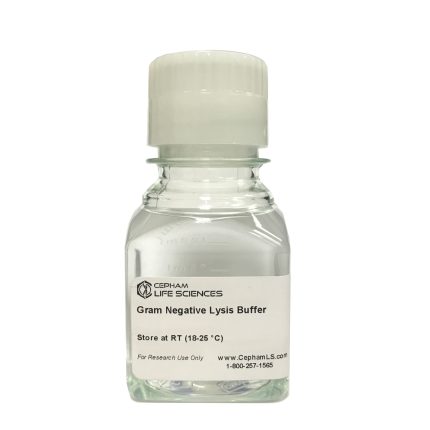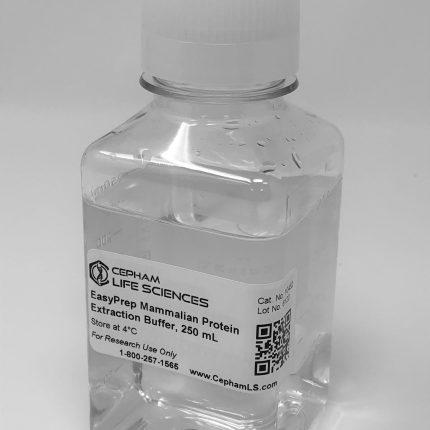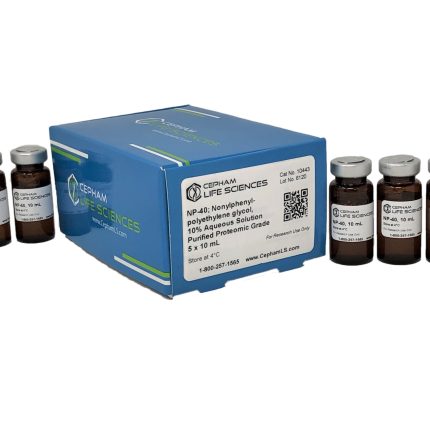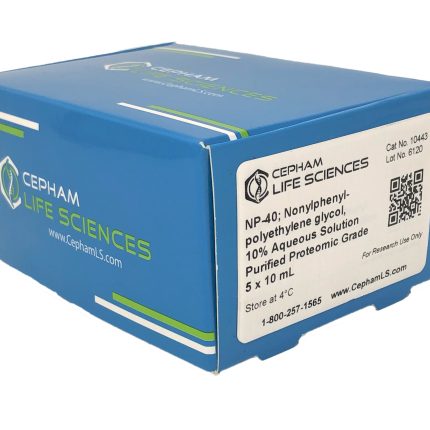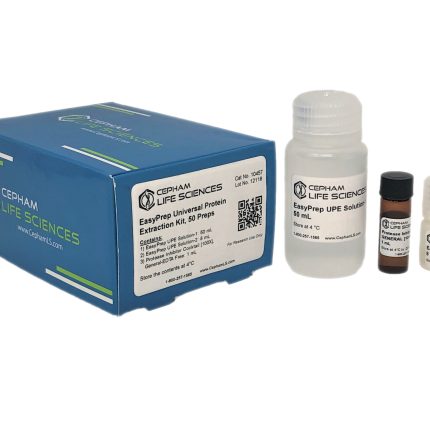NHS-SS-Biotin is Succinimidyl-2-(biotinamido)-ethyl-1,3′-dithiopropionate, an amine-reactive biotinylation reagent that is cleavable when the disulfide (-S-S-) bond is reduced. NHS-SS-Biotin enables simple and efficient biotinylation of antibodies, proteins and other primary amine-containing molecules, as well as intracellular labeling. NHS-SS-Biotin is cell membrane permeable and has a long chain separating the biotin group from the amino-reactive NHS-ester (N-Hydroxysuccinimide ester). The resulting biotinylated protein can then be detected when used in conjunction with streptavidin. The biotin group can be cleaved from the crosslinked target protein under reducing conditions, in the presence of DTT or TCEP-HCl. This technique is commonly used to purify antibodies or other proteins from a biotin specific affinity resin, e.g, Immobilized Streptavidin without exposing the protein of interest to denaturing conditions.
Chemical Formula: C19H28N4O6S3
Molecular Weight: 504.65
Spacer Length: 24.3 Å
CAS Number: 142439-92-7
Synonyms: Biotin disulfide N-Hydroxysuccinimide ester; NHS SS Biotin, Sulfosuccinimidyl-2-(biotinamido)-ethyl-1,3’-dithiopropionate
Solubility: Must be dissolved in DMSO or DMF before further dilution in aqueous buffers
Storage: Shipped at ambient temperature, Upon receipt store at 4°C
Features of NHS-SS-Biotin:
1. Amine-reactive— It reacts with primary amines (-NH2), such as the side-chain of lysines (K) or the amino-termini of polypeptides
2. Spacer arm— The extended spacer arm (24.3 angstroms) of this reagent reduces steric hindrance associated with binding to avidin or other biotin-binding proteins and incorporates a reducing agent-cleavable disulfide bond (-S-S-) within the spacer, providing further versatility to the reagent.
3. Cleavable— The disulfide bond in spacer arm allows the biotin label to be removed using reducing agents such as DTT; only a small sulfhydryl group remains attached to the molecule
4. Membrane-permeable— It can be used to label inside cells (intracellular), being membrane permeable



